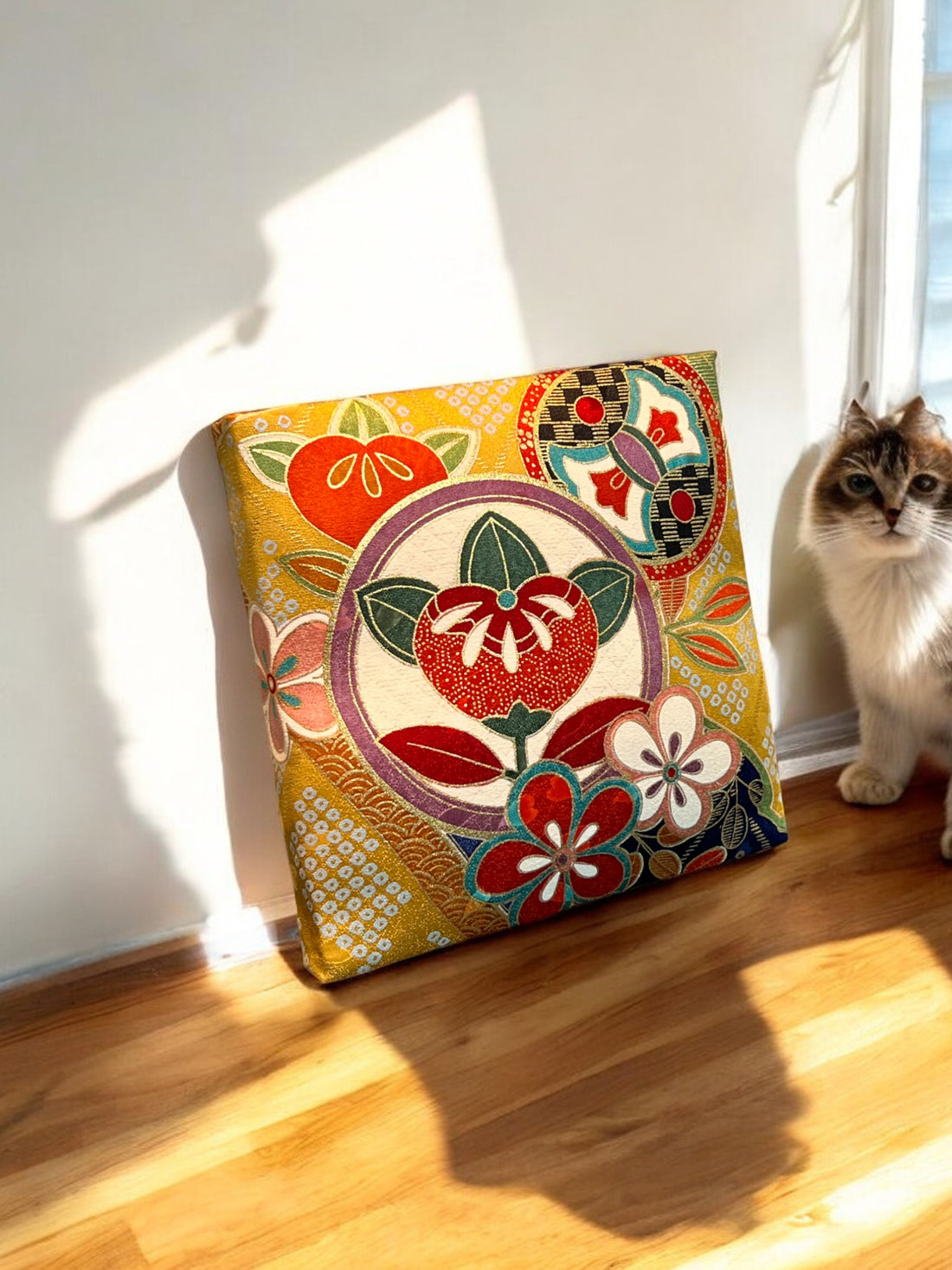1. The Meaning and Importance of Traditional Culture
Traditional culture is a collection of arts, customs, values, and practices passed down from the past, reflecting the identity and history of a particular region or ethnicity. These traditions not only strengthen societal bonds and provide common values and understanding but also foster creativity and support people's spiritual richness and sense of well-being. Traditional culture, when preserved and passed down as cultural heritage, ensures the sustainability of society. Therefore, protecting and utilizing traditional culture is crucial, requiring respect for cultural diversity and efforts to preserve and transmit these traditions to future generations.
1-1. What is Tradition? Key Elements Shaping Japan's History and Society
Tradition is a key element that has shaped Japan's history and society. It is a collection of cultural practices, customs, values, and techniques that have been passed down for generations. These traditions are a source of identity and pride for the Japanese people, supporting the cohesion of Japanese society. Rooted in historical events and cultural exchanges, Japanese traditions are expressed through various forms such as art, architecture, food, and festivals. While traditions have evolved over time, they remain grounded in the values and spirit of ancient times. Even today, tradition plays a significant role in Japanese society, influencing the creation of new values and culture.
1-2. Traditional Arts and Techniques: Exploring Regional Diversity
Traditional arts and techniques vary greatly by region, reflecting the unique history, culture, and environment of each area. Throughout Japan, you’ll find a wide range of traditional arts, including dance, music, crafts, and architecture. These are deeply rooted in local lifestyles and reflect the distinct characteristics of each region. For instance, Kyoto is known for tea ceremonies and Noh theater, while Okinawa features Ryukyu dance and Eisa drumming, and Hokkaido is home to the Ainu people's traditional crafts. The diversity of traditional arts and techniques across regions is a vital part of Japan’s rich cultural heritage, showcasing each area's unique identity and charm.
1-3. The Value of Tradition: Its Role and Dissemination in Modern Society
Tradition holds significant value in modern society. It is an accumulation of knowledge, skills, culture, customs, and values passed down from the past, helping to strengthen societal bonds and shape identities. Tradition also serves as a source of creativity, contributing to the development of new cultural expressions and values. In modern times, the various values of tradition are being reevaluated, not only protected as cultural heritage but also spread through education, tourism, and events. The preservation and promotion of tradition are also connected to building a sustainable society, as it considers environmental and social aspects. Moreover, the value of tradition plays an important role in international exchanges, fostering cultural understanding and cooperation. Through these efforts, the value of tradition is widely disseminated across generations and societies, contributing to sustainable development and coexistence.
2. The Relationship Between Tradition and Modern Culture: Where the Old and New Intersect
Tradition and modern culture intersect in significant ways. Modern culture is influenced by tradition, while also incorporating new values and methods of expression. For example, traditional arts and crafts are being fused with contemporary design and technology to create new products and works. Similarly, traditional events and festivals are being reinterpreted from a modern perspective, providing new ways to experience them. On the other hand, elements of tradition are also being incorporated into modern culture, paying homage to traditional values and practices. This interaction between tradition and modern culture creates new cultural expressions and identities, demonstrating the potential for rich diversity and coexistence.
2-1. The Coexistence of Tradition and Modern Culture: Connections Across Generations
Tradition and modern culture coexist through connections that span generations. Tradition provides historical knowledge and experiences that serve as the foundation for culture and identity. Meanwhile, modern culture continuously evolves, incorporating new values and expressions. Through intergenerational connections, tradition is reinterpreted by younger generations and integrated into contemporary culture. Traditional events and festivals also take on new significance and value in modern society, being passed down to future generations. In this way, tradition and modern culture coexist and influence one another, creating a rich cultural landscape.
2-2. Inheriting and Innovating Tradition: Blending the Old and the New
Inheriting and innovating tradition is essential for building a vibrant culture that combines the best of the old and the new. Inheriting tradition involves passing down knowledge, skills, arts, customs, and values to future generations, preserving societal identity and history. Innovation, on the other hand, introduces new ideas, values, and technologies to adapt tradition to modern times. By combining these two aspects, tradition is revitalized and continues to thrive. For example, traditional crafts may incorporate new designs or materials, and traditional festivals may include modern entertainment elements, creating new value and appeal. In this way, inheriting and innovating tradition are crucial processes for maintaining cultural sustainability and fostering diversity.
2-3. The Impact of Traditional Culture on Daily Life: Contributions to Health and Education
Traditional culture has a significant impact on daily life, particularly in the areas of health and education. Traditional diets, which are often balanced and make use of local and seasonal ingredients, contribute to better health. Traditional physical activities such as martial
arts, dance, and crafts not only enhance physical abilities but also reduce stress and help maintain mental and physical balance. Additionally, traditional medicine and natural therapies play a role in preventing and treating illnesses.
In terms of education, traditional culture is deeply connected to language, history, religion, and the arts, offering valuable lessons to children about their cultural roots and instilling a sense of pride. Traditional values and ethics also influence moral education and character development. By incorporating traditional culture into education, communities can strengthen their cohesion and ensure the preservation of their cultural heritage. These factors highlight the important role traditional culture plays in the fields of health and education, contributing to sustainable development and the well-being of society.
3. Efforts to Preserve Japan’s Tradition: The Role of Government and Local Communities
Preserving Japan’s traditional culture requires proactive efforts by both the government and local communities. The government has implemented laws and policies to support the protection and transmission of traditional culture, providing assistance for cultural heritage preservation, promoting traditional crafts, and supporting festivals and other cultural events. Local governments and private organizations are also actively working to preserve and promote traditional culture through events, hands-on experiences, and programs designed to pass down traditional techniques and crafts. Educational institutions also play a key role in passing on the value of traditional culture through school curriculums, exhibitions, and instruction in traditional arts and crafts. These efforts ensure that Japan’s traditional culture is passed down to future generations as a rich cultural legacy.
3-1. The Cultural Properties Protection Law: Preserving Historical Buildings and Performing Arts
The Cultural Properties Protection Law is designed to preserve and pass down Japan’s cultural assets, which include important cultural properties, historic sites, and traditional techniques and performing arts designated by the government. Under this law, cultural properties are maintained, restored, and protected, with financial support provided by the government and local authorities. Historical buildings, for example, are restored using traditional construction techniques and materials to preserve their historical significance and beauty. In the realm of performing arts, the traditional master-apprentice system and specialized teaching methods ensure that younger generations are trained and performances are held. These efforts help preserve and pass on Japan’s cultural heritage to future generations.
3-2. The Relationship Between Regional Revitalization and Traditional Culture: Promoting Tourism and Local Economies
Traditional culture plays a key role in regional revitalization, tourism, and the development of local economies. Festivals and events that celebrate traditional culture attract tourists and stimulate local economies. Traditional crafts and local specialties are often sought after by visitors and contribute to regional industry promotion. Additionally, facilities and tours that allow visitors to experience traditional culture are used as tourism resources. Traditional performing arts and festivals not only enhance regional identity but also foster pride and solidarity among local residents. By preserving and utilizing local traditions, regions can increase their appeal, attract tourists, and promote local development. This, in turn, revitalizes the local economy and improves the quality of life for residents.
3-3. Policies to Promote Traditional Industries: Passing Down Techniques and Knowledge While Fostering Innovation
Policies to promote traditional industries are designed to support the continuation and innovation of these industries, contributing to regional economic growth and cultural preservation. The government provides subsidies, tax incentives, and technical support to promote traditional industries, ensuring that techniques and knowledge are passed down to future generations. At the same time, innovative approaches and new technologies are encouraged to enhance the competitiveness and expand the market for traditional industries. Master-apprentice relationships, educational programs, and on-the-job training help nurture young artisans. Innovation includes incorporating new designs, developing new products, and improving marketing strategies, adding value to traditional industries. Through these efforts, traditional industries continue to serve as pillars of the local economy while preserving regional culture and identity, adapting and growing with the times.
4. Expanding Traditional Culture Through Global Exchange
The development of traditional culture through global exchange fosters cultural diversity and deepens its significance. International exchanges, cultural events, and overseas exhibitions and performances offer opportunities to showcase traditional culture to a wider global audience, while discovering new value in these traditions. Exposure to and interaction with different cultures can inspire innovation within traditional culture, leading to fresh developments. This exchange not only promotes the protection and transmission of traditional culture but also contributes to its revitalization and evolution. Increased recognition and appreciation of traditional culture on the global stage attract cultural enthusiasts and tourists, fostering cultural exchange and strengthening international relationships. In this way, global exchange helps spread the richness and appeal of traditional culture while offering new possibilities for its development and preservation.
4-1. Internationalizing Traditional Culture: Understanding and Appreciation by Foreign Audiences
The internationalization of traditional culture promotes understanding and appreciation by foreign audiences. Through internationalization, traditional culture gains attention and understanding worldwide. When foreigners experience and learn about traditional culture, they come to appreciate its value and significance. Their curiosity and interest in traditional culture lead to increased recognition, helping to preserve and protect it. This also contributes to cultural exchange and international goodwill.
4-2. Commonalities and Differences Between Foreign Traditions: Learning Through International Comparisons
By comparing foreign traditional cultures, we can identify commonalities and differences, gaining new insights. Commonalities can be found in cultural elements such as people’s lifestyles, religious beliefs, and festivals. Differences, on the other hand, arise from historical and environmental factors. International comparisons allow us to reassess the unique characteristics and values of our own traditional culture, incorporating new ideas and methods. By learning from the successes and challenges of other countries, we can apply this knowledge to develop and preserve our own traditions. This deepens mutual understanding and respect between cultures, promoting cultural exchange in the international community.
5. Conclusion: The Future of Traditional Culture and Our Role
The future of traditional culture depends on our efforts and engagement. We have a responsibility to protect and pass down traditional culture, ensuring that it remains a rich cultural legacy for future generations. It is also essential to find new value and meaning in tradition, adapting it to modern society. This requires the use of technology and digital media, nurturing young talent, and collaborating with local communities. Recognizing the importance of traditional culture, we must actively participate in activities that promote its value, such as cultural exchange and awareness-raising efforts. By doing so, we can breathe new life into traditional culture, paving the way for its continued evolution into the future.

